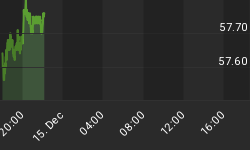The first trading day of December was off to a running start, with global stock markets gaining strongly yesterday on positive developments in Europe and upbeat economic data. As a matter of fact, American bourses experienced a so-called 90% up-day. (A 90% up-day is defined as a day when upside volume equals 90% or more of the total upside plus downside volume and points gained equal 90% or more of the total points gained plus points lost.) Market breadth was excellent, with many indices bouncing off their key moving averages. Time will tell whether indices have seen their reaction lows (with good follow-through in Asia and Europe as I write).
In the meantime, focusing on the S&P 500 Index, I have done a short analysis of the historical pattern of monthly returns for this index over various measurement periods back to 1871. The results are summarized in the graph below.

Source: Plexus Asset Management (based on data from I-Net Bridge).
It is shown that December has historically been a good month, especially when considering the last 50 years. When looking at the periods since 1960, December is vying with April for the month with the largest percentage positive readings.
| S&P 500 Index: Percentage Positive Readings | |||
| Feb 1871 to Oct 2010 | Sep 1960 to Oct 2010 | Sep 1980 to Oct 2010 | |
| Jan | 64.75% | 62.00% | 58.06% |
| Feb | 52.14% | 54.00% | 54.84% |
| Mar | 55.00% | 60.00% | 58.06% |
| Apr | 59.29% | 72.00% | 70.97% |
| May | 50.71% | 56.00% | 61.29% |
| Jun | 54.29% | 58.00% | 67.74% |
| Jul | 57.86% | 54.00% | 58.06% |
| Aug | 60.71% | 58.00% | 64.52% |
| Sep | 58.57% | 58.82% | 61.29% |
| Oct | 49.29% | 54.90% | 54.84% |
| Nov | 56.12% | 62.00% | 63.33% |
| Dec | 54.68% | 70.00% | 73.33% |
Where does this leave us? When evaluating valuation levels and the technical outlook for stock markets, one should also take cognizance of seasonality but understand that it is not a stand-alone indicator and it is anybody's guess whether a specific year will conform to the historical pattern. (After all, November was also supposed to be a good month ...)
















